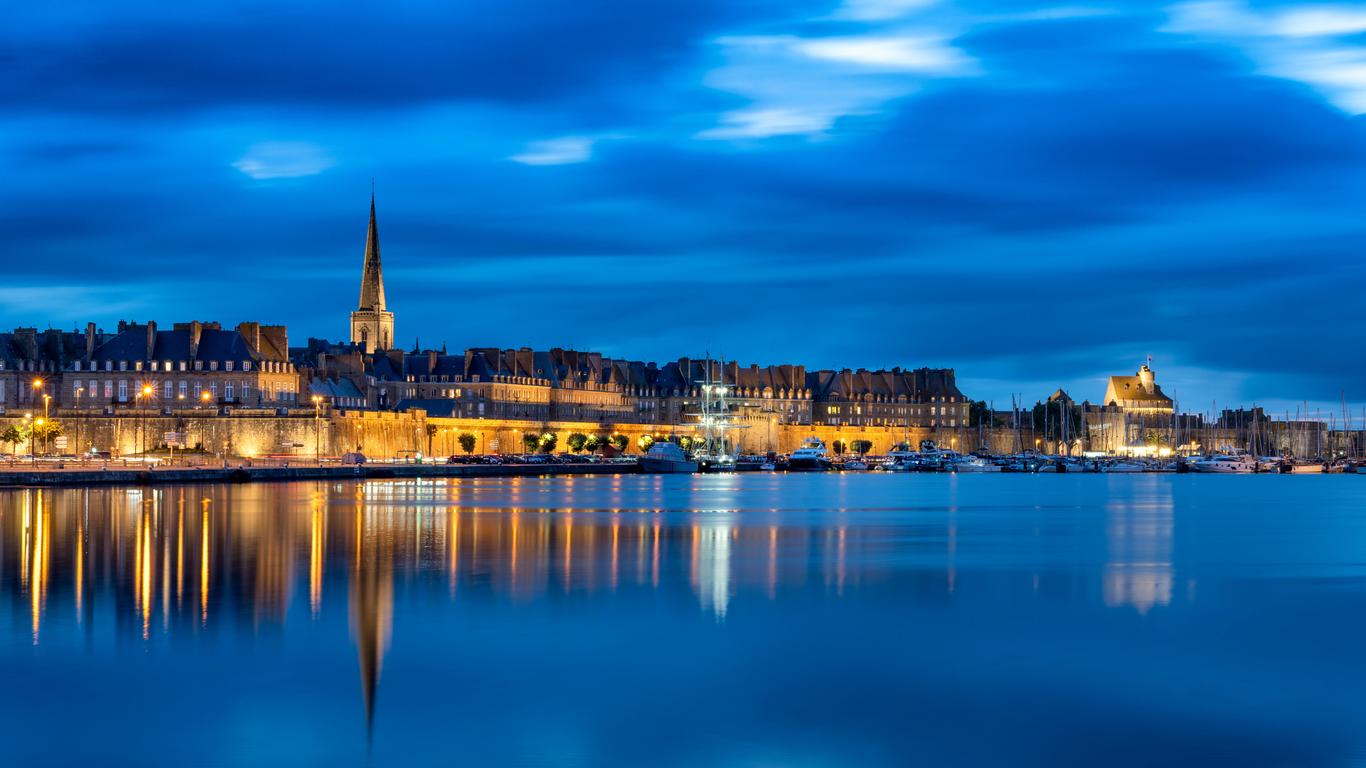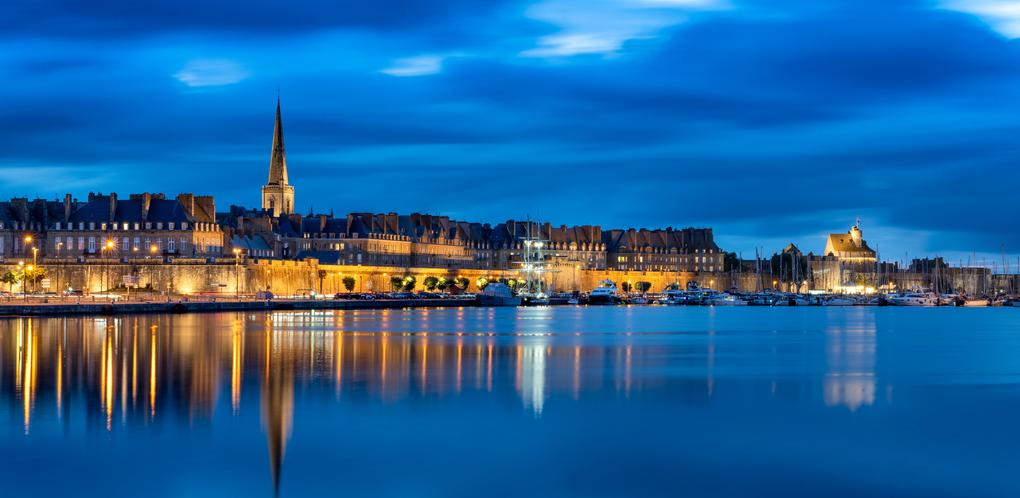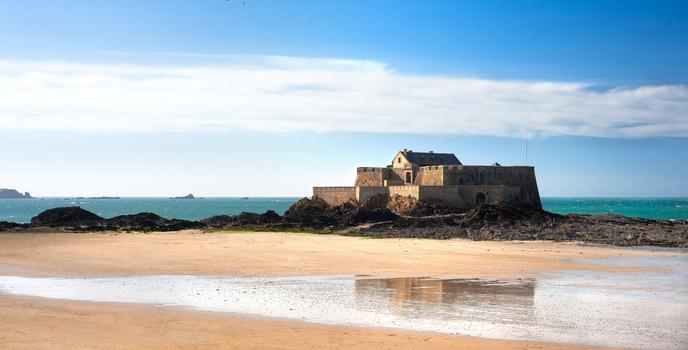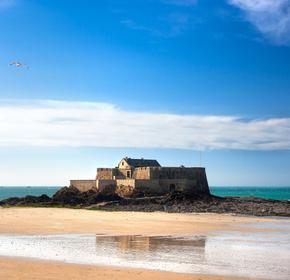1. Fort National: Guarding the City
Fort National, a military fort on l'Îlette rock off of Saint-Malo, was designed by architect Sébastien Le Prestre de Vauban in 1689 to defend the port of the city. During World War II, German bombs destroyed part of the stronghold, though it was later rebuilt. The granite fort can be visited only at low tide by foot, and from April to September, the interior is available for guided visits, which run for forty minutes. But fear not: during the off-season, hikers can still enjoy spectacular views of Saint-Malo and the surrounding islands.
2. Porte Saint-Vincent: Gateway to Saint-Malo
Built in in 1708, Porte Saint-Vincent connects to a sandy beach named Le Sillon. The main portal to the citadel, visitors will find the Place Chateaubriand upon entering, which houses many hotels and restaurants near the Port. But the gate itself is something to marvel at, decorated with orate escutcheons which give a glimpse into the city's past. There are two coats of arms on the front gate, including the coat of arms of the city and the coat of arms of the Duchy of Bretagne.
3. Grande Plage du Sillon: A Sandy Escape
The most extensive sandy beach in Saint-Malo, Grande Plage du Sillon features three separate beaches, the Grande, the Hoguette, and the Rochebonne. One of the city's most popular tourist attractions, the beach, which stretches from Intramuros to Parame, is lined with a dyke built in 1883. The walkway is bordered by stately 19th-century villas. Oak breakers, designed by Ponts and Chaussées Robinault from Saint-Servan, protect the dyke from the waves. The beach draws swimming, yachting, and windsurfing enthusiasts.
4. Grand Aquarium de Saint-Malo: Underwater Exploration
The Grand Aquarium de Saint-Malo, the second-most-visited site in Bretagne, was founded in 1996 and is managed by Compagnie des Alpes, which owns many parks throughout France and Europe. Housing 11,000 marine animals from 600 different species, the aquarium features a variety of underwater rooms, which showcase the cold and temperate seas, mangroves, tropical waters, a shark infested ship wreck and a touch pool with local species such as sea stars, bats, rays and spiders. Visitors will also find a shark ring with four species of sharks, and a basin with four sea turtles, as well as the Nautibus, a small submarine which explores the underwater habitat of more than 5,000 fish.
5. Grand Bé: Sacred Ground
Grand Bé, a tidal island near the city, is situated near the mouth of the Rance River, close to the walls of Saint-Malo. The island can be accessed at low tide on foot from Bon-Secours beach. Grand Bé houses the remains of an ancient fortress built in 1555, as well as the gravesite of François-René de Chateaubriand, a local writer who was buried on the islet on July 18, 1848. In 1360, a chapel was built in honor of Our Lady of the Laurel.





